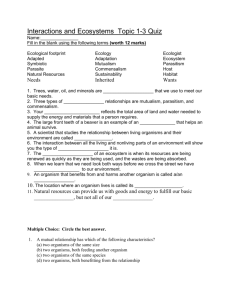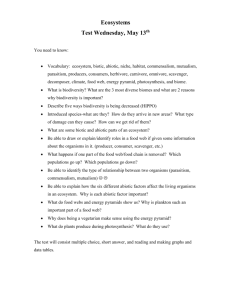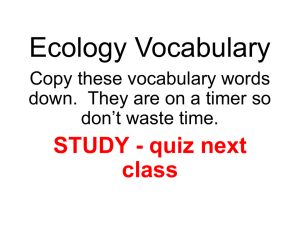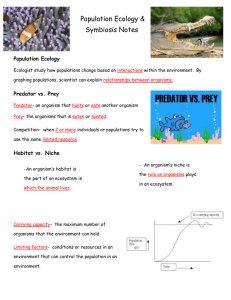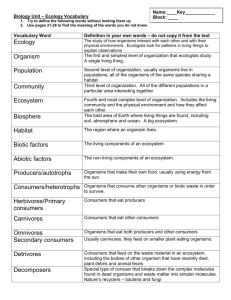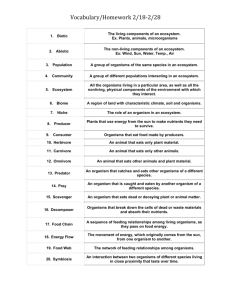8th Grade Science Interactions of Life Chapter 4 Study Guide Living
advertisement
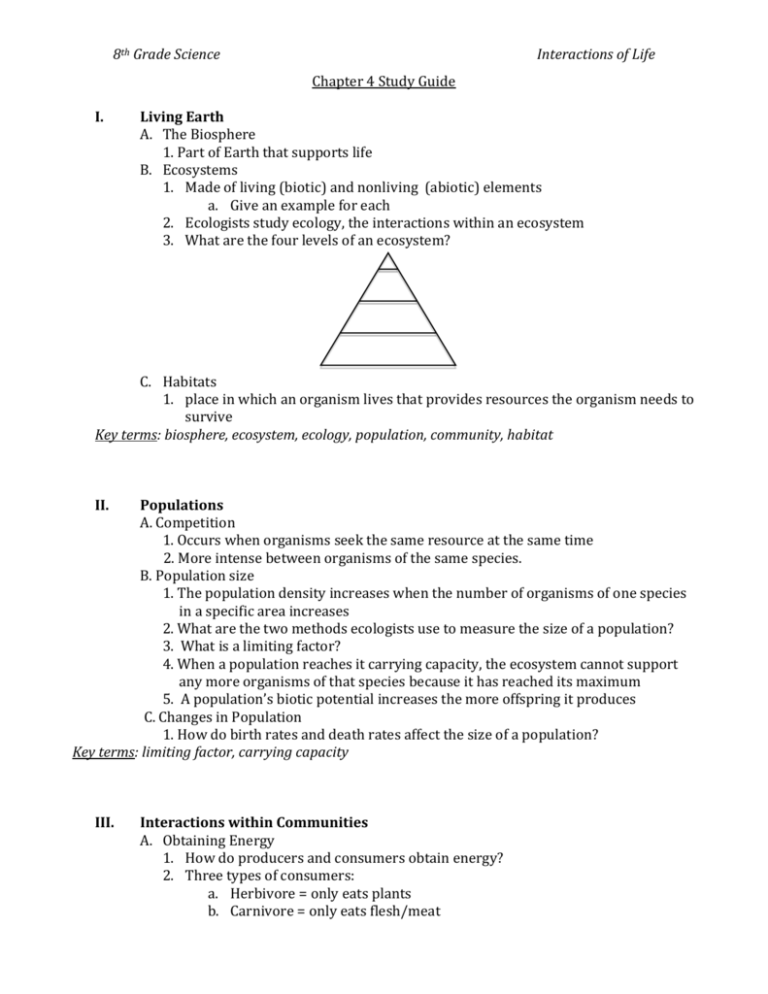
8th Grade Science Interactions of Life Chapter 4 Study Guide I. Living Earth A. The Biosphere 1. Part of Earth that supports life B. Ecosystems 1. Made of living (biotic) and nonliving (abiotic) elements a. Give an example for each 2. Ecologists study ecology, the interactions within an ecosystem 3. What are the four levels of an ecosystem? C. Habitats 1. place in which an organism lives that provides resources the organism needs to survive Key terms: biosphere, ecosystem, ecology, population, community, habitat II. Populations A. Competition 1. Occurs when organisms seek the same resource at the same time 2. More intense between organisms of the same species. B. Population size 1. The population density increases when the number of organisms of one species in a specific area increases 2. What are the two methods ecologists use to measure the size of a population? 3. What is a limiting factor? 4. When a population reaches it carrying capacity, the ecosystem cannot support any more organisms of that species because it has reached its maximum 5. A population’s biotic potential increases the more offspring it produces C. Changes in Population 1. How do birth rates and death rates affect the size of a population? Key terms: limiting factor, carrying capacity III. Interactions within Communities A. Obtaining Energy 1. How do producers and consumers obtain energy? 2. Three types of consumers: a. Herbivore = only eats plants b. Carnivore = only eats flesh/meat 8th Grade Science Interactions of Life c. Omnivore = eats both plants and meat 3. Why are decomposers considered consumers? B. Symbiotic Relationships 1. How are organisms affected in each type of symbiotic relationship? a. Parasitism b. Mutualism c. Commensalism C. Niches 1. role an organism has in its environment that allows it to survive 2. predator vs. prey Key terms: producer, consumer, symbiosis, mutualism, commensalism, parasitism, niche Short answer/essay question: 1. Your habitat essay is your test essay

